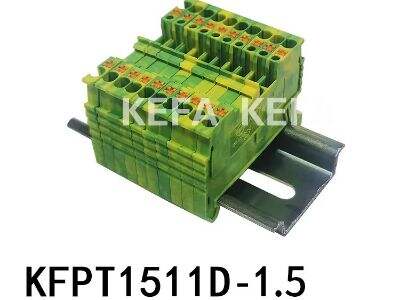Кратка история на DIN-шината
Технологията на DIN-шината започна доста просто. Първоначално беше само метод за монтиране на електрически устройства вътре в апаратни стойки. Но в крайна сметка хората установиха, че им е необходимо нещо, което може да извършва по-сложни функции. И така ние имаме нашите din rail терминали . Те бяха променящи правилата, тъй като направиха окабеляването по-подредено и конфигурациите по-плътни. По-ранните устройства бяха прости, но те положиха основата за невероятната технология, която имаме днес.
Какво е направила автоматизацията с терминалните връзки
Виждате ли, автоматизацията е роботизиран помощник, който не прави почивки. Тя променя начина, по който терминалите се свързват. Днес голяма част от работата по изграждането на връзки се извършва от машини, които са по-бързи и по-малко податливи на грешки. Терминалите на KEFA работят отлично с автоматизирани системи, осигурявайки безпроблемно функциониране. Тази промяна доведе не само до подобрения в скоростта, но и в областта на безопасността и надеждността в индустрии като производството и транспорта.
Изследване на най-новите разработки в DIN-шинни терминали
Новите DIN-шинни терминали са наистина прецизни в това, че могат да правят много повече неща в сравнение с по-старите версии. Те са по-интелигентни и могат да се адаптират към нуждите без да изискват човек да ги превключи в различен режим. Някои дори са оборудвани с функции, които им позволяват да комуникират с други елементи от системата, като споделят важна информация за по-добро функциониране на цялата система. Такъв вид технологии предотвратяват възникването на проблеми и помагат системите да работят ефективно.
DIN-шинната технология се променя в отговор на променящите се икономически изисквания
Индустриите се адаптират и DIN-шинната технология трябва да се адаптира заедно с тях. Новите предизвикателства изискват нов тип терминали, способни да се справят с неща като възобновяема енергия и умно производство. терминали за релейна шина с 6 мм произведени от KEFA, са изключително гъвкави и са способни да задоволят тези нови нужди. Те могат да се използват в различни енергийни и околните среди, което е наистина важно за бизнеси, които искат да мислят напред.
Какво ни предстои в бъдещето за технологията на DIN-релсовите клеми
Ако искате да надникнете зад ъгъла, бъдещето изглежда светло за DIN-релсовите клеми. Става дума за клеми, които ще са още по-умни и свързани. Те биха могли да използват изкуствен интелект, за да предвидят кога ще се нуждаят от поддръжка, още преди да се повредят. И така биха се спестили много време и пари. Освен това, с все повече бизнес сфери, които започват да прилагат автоматизация, нуждата от типа din релейни терминали усъвършенстване ще става все по-голяма. KEFA вече разработва терминали от следващо поколение и иска да заеме водеща позиция в областта на иновациите и надеждността.

